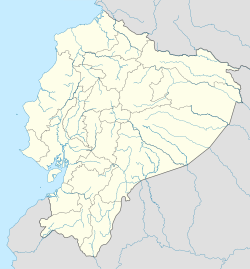Salinas Museum 21st Century
The museum is located in Salinas Guayas, Malecon and Quil streets and is known as "The Museum of the Great Peninsula". It has an archaeological room, a temporary exhibition hall, a lounge, and a naval parade.
The Archaeological room has a complete sample of the cultures that settled in this large peninsula. Represented are the Valdivia culture (3500 - 1500 BC), the Machalilla culture (1500 - 1100 BC), and the later Engoroy variant of the Chorrera culture. Also the Jambelí Guangala Regional Development period (500 BC - 500), and maintenance-Integration Guancavilca period (500-1530) are represented. The finds shown include human and animal figurines, ceremonial and utilitarian vessels, bottles, whistles, stone axes, beads and necklaces made of Spondylus shells, horns, and a variety of both cylindrical and flat seals.
On displays is a model of a raft - Guancavilca Manteña - reproduced according to the description of Samano 1526. The Guancavilcas large rafts were in their black-colored vessels, hands and stone metate for grinding grains, spherical stone weights for nets and pointed to the divers who were also used to hit and release Spondylus shells attached to rocks; copper objects such as axes and hatchets handle coins and Spondylus shell accounts, circular and rectangular shapes that were marketed along with the copper material, in Mexico and Peru, are evidence of the last thousand years of navigation our country.
A model that reproduces the galleon Jesus Maria de la Limpia Concepcion known as "The Captain" takes us back to colonial times and the exhibit showcases the salvage in that galleon wrecked in 1654 off the coast of Chanduy.
Coins of 1, 2, 4 and 8 reales (cobs or crushed calls)? were made in silver and transported on ships to Panama and from there to the Caribbean to be transported to Europe, fragments of silver cutlery and plates and pottery is known as majolica bars, tin, silver, cannonballs both bronze, and iron and lead for muskets.
A gold cross with Latin inscriptions, an earring with pearl bases, burner and silver candelabra, a buckle, metal earrings agate and correspond to the material used for personal use by the passengers on this ship that ran aground off the coast of the town of El Real.
Punta Carnero Beach
People travel from all over the world because the surfing in Ecuador offers an ideal climate all year round. Punta Carnero is a beach located approximately ten minutes south of Salinas. Its name, "Ram Point" in English, stems from the rocky headland located at the southeast end of the beach. Punta Carnero Beach has been chosen many times to be the venue of not just national surf competitions, but also at an international level.
The beach extends for approximately 1.6 miles (2.6 km) and is relatively wide, with white to gray sand, medium waves and a prevalent inland breeze.
Many who travel to Punta Carnero also visit other famous beaches which are found just off the coast of Ecuador by 972 kilometres (604 mi) is known the world over, the Galápagos Islands an area of volcanic islands distributed around the equator in the Pacific Ocean.



